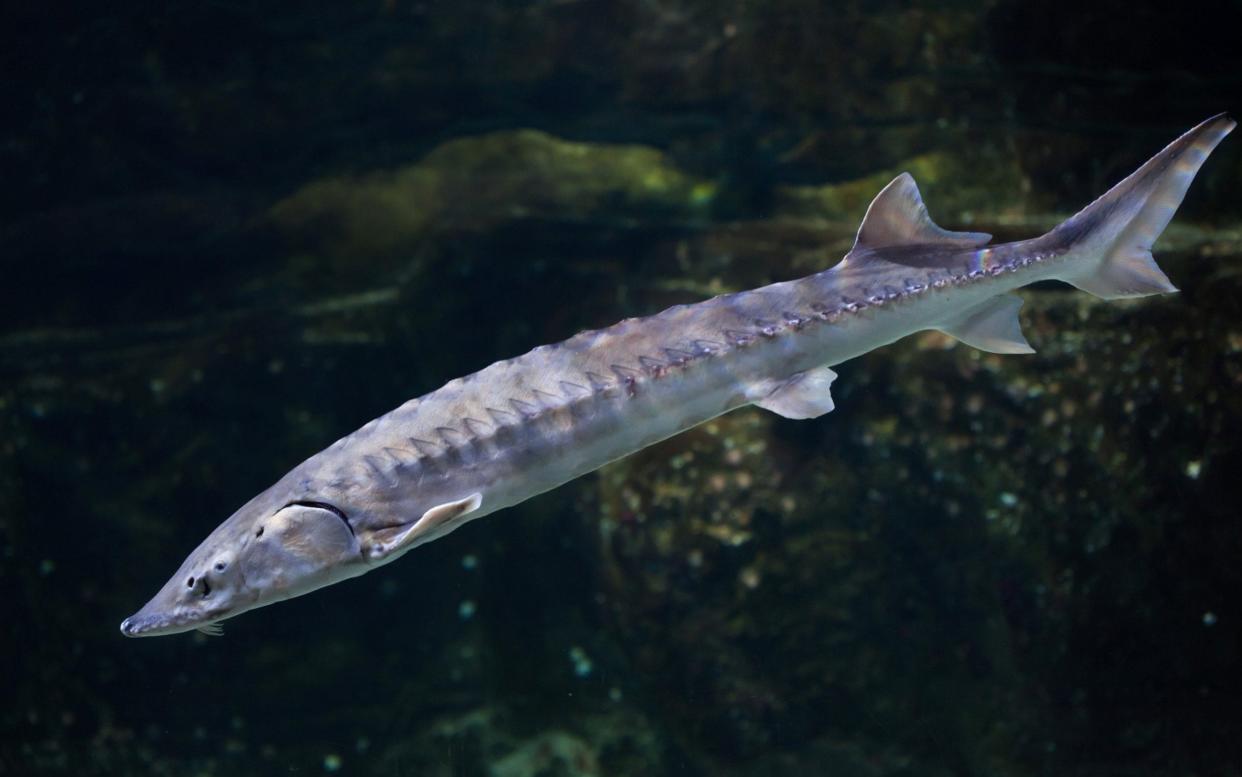Sturgeon hunted for caviar could be returned to British rivers for first time in 200 years

- Oops!Something went wrong.Please try again later.
- Oops!Something went wrong.Please try again later.
- Oops!Something went wrong.Please try again later.
Sturgeon, once hunted for its caviar and meat, could be returning to Britain's waters after 200 years.
The European Sturgeon is critically endangered and now only breeds in the Garonne river basin in France.
In the 19th century, the fish was found in all major UK rivers including the Severn, Avon, Ouse, some Scottish rivers and the Thames, with remnants of sturgeon found in the medieval remains of Westminster Abbey.
Sturgeons were wiped out in this country after weirs were built in rivers, making it impossible for them to travel to breed, and their flesh and eggs were enjoyed as a delicacy. The fish can live for up to a century, and take years to reach sexual maturity, meaning they are very vulnerable to over-fishing.
Environment groups including the Blue Marine Foundation and the Zoological Society of London have earmarked the River Severn, which is already going through a nature restoration scheme, as a potential release point for the endangered fish. The project is being funded by Ben Goldsmith, Defra board member and brother of environment minister Lord Goldsmith.
Conservationists believe the bottom-feeders could help clean up Britain's rivers. Rory Moore, who leads the project on behalf of the Blue Marine Foundation, told The Telegraph: "There is a known ecological link or symbiosis between European sturgeon and the endangered giant freshwater pearl mussel (also a river cleaner).
"The mussel larvae attach to the gills of sturgeon as part of their life-cycle. As omnivorous scavengers, sturgeon remove decaying organic matter from estuaries and feed on worms and crustaceans in the mud. It is highly likely that many other species would benefit from sturgeon reintroduction, including all migratory fish (salmon, trout, lamprey, eels, shad) as barriers such as weirs are removed or bypassed."
The group is working to identify and restore spawning and feeding grounds, initially on the Severn, Wye and Twyi, and then will formulate an action plan. A similar reintroduction took place on the Garonne river in France, where fish were released several years ago and are due to return.
Scientists are carefully watching that project to see if it is successful, as it can take up to 12 years for the fish to return from the sea to the rivers. Adults migrate across the continental shelf covering considerable distances and will likely return to spawn in the exact same river where they hatched.
The Blue Marine Foundation said in its proposal: "Sturgeon play a key role in ecosystems. As bottom feeders, sturgeon consume detritus helping to actively clean their environments. As sturgeon are particularly vulnerable to changes in their environment, they are an excellent indicator species for ecosystem health and water quality."
The fish is a priority species on the UK Government Biodiversity Action Plan and it is understood ministers are enthusiastic about the idea of returning it to British waters after seeing reintroduction schemes elsewhere in Europe.

